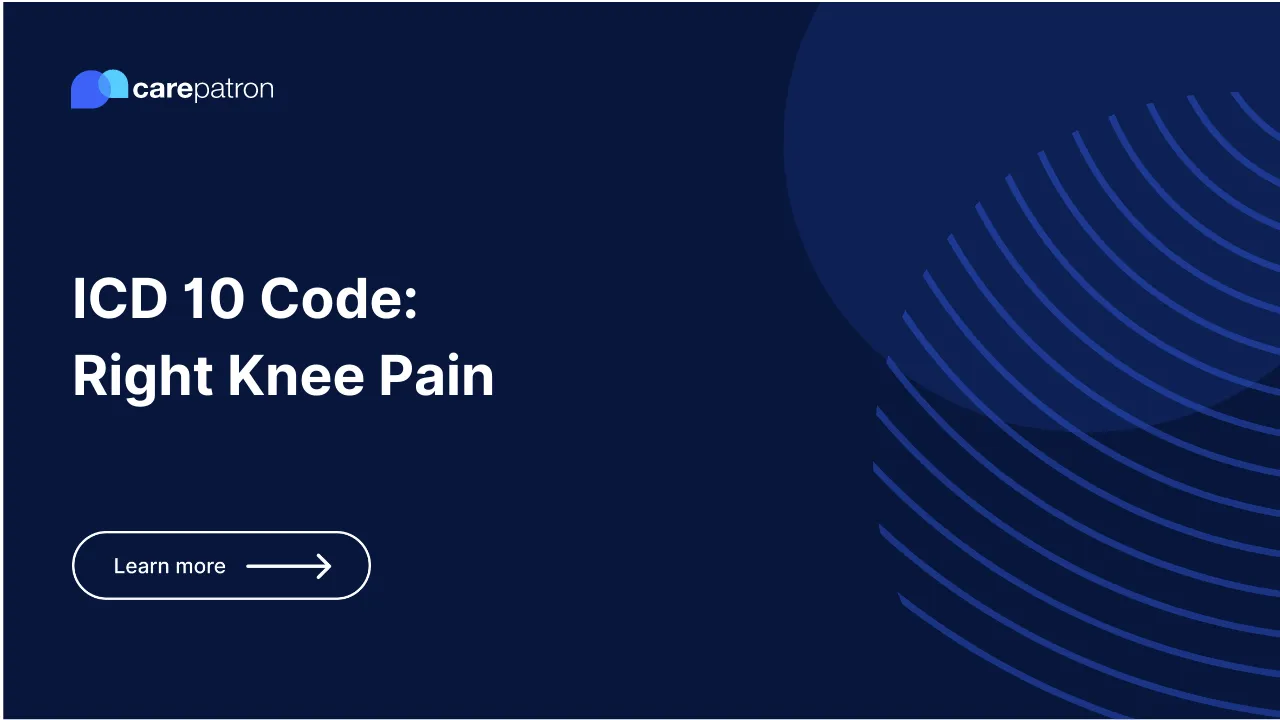M54.16 – Radiculopathy, lumbar region
Discover symptoms, causes, and treatments of lumbar region radiculopathy (M54.16) - a condition causing lower back pain & nerve root compression.

M54.16 Diagnosis Code: Radiculopathy, lumbar region
- Radiculopathy refers to a condition characterized by the compression or irritation of one or more nerve roots in the spinal region, leading to sensory, motor, or reflex disturbances.
- M54.16 specifically identifies radiculopathy in the lumbar (lower back) region.
- The code includes radiculopathy resulting from intervertebral disc disorders, degenerative changes in the spine, and other related conditions.
- The lumbar region encompasses the five lower vertebrae (L1-L5) and the spinal nerves.
- Radiculopathy in the lumbar region often presents with symptoms such as lower back pain, radiating leg pain (sciatica), numbness, tingling, and muscle weakness.
- Herniated discs, spinal stenosis, spondylolisthesis, and other structural abnormalities in the lumbar spine can cause it.
- Diagnosis of M54.16 requires clinical evaluation, medical history review, and imaging studies to identify the underlying cause and location of nerve root compression or irritation.
Is M54.16 Billable: Yes
Yes, M54.16 – Radiculopathy, lumbar region is a billable code in the International Classification of Diseases, 10th Revision, Clinical Modification (ICD-10-CM) system. It can be used for healthcare billing, insurance reimbursement, and statistical purposes.
When documenting the diagnosis of radiculopathy in the lumbar region, the appropriate ICD-10-CM code (M54.16) should be assigned to represent the condition and facilitate proper billing procedures accurately.
Clinical Information
Radiculopathy in the lumbar region may manifest with the following clinical information:
- Lower back pain radiating to the buttocks, hips, or legs.
- Sensory disturbances include numbness, tingling, or a "pins and needles" sensation.
- Muscle weakness or loss of reflexes in the lower extremities.
- Aggravation of symptoms with certain movements, such as bending, twisting, or prolonged sitting.
- Potential involvement of multiple nerve roots in the lumbar spine.
- Varying degrees of pain intensity range from mild discomfort to severe, debilitating pain.
- Symptoms such as coughing or sneezing may worsen with activities that increase pressure on the affected nerve roots.
- Diagnostic tests, including imaging studies (e.g., MRI, CT scan), electromyography (EMG), and nerve conduction studies, can aid in confirming the diagnosis and identifying the underlying cause.
Synonyms Include:
- Radiculopathy, lumbar
- Lumbar nerve root compression
- Lumbosacral radiculopathy
- Lumbar radiculitis
- Sciatica, lumbar region
- Lumbosacral nerve root disorder
Other ICD-10 Codes Commonly Used for Lumbar Region
- M54.30 – Sciatica, unspecified side
- M54.31 – Sciatica, right side
- M54.32 – Sciatica, left side
- M51.36 – Other intervertebral disc degeneration, lumbar region
- M48.06 – Spinal stenosis, lumbar region
- M43.16 – Spondylolisthesis, lumbar region
- M47.816 – Other spondylosis with radiculopathy, lumbar region
- M54.5 – Low back pain
- M54.17 – Radiculopathy, sacral region
- M54.4 – Lumbago with sciatica
.png)
Commonly asked questions
Treatment options may include physical therapy, nonsteroidal anti-inflammatory drugs (NSAIDs), epidural steroid injections, chiropractic care, and surgical interventions in severe cases.
In some cases, if left untreated or if the underlying cause persists, radiculopathy can lead to long-term nerve damage and chronic pain. Early diagnosis and appropriate management are crucial to prevent potential complications.
Radiculopathy symptoms may improve in mild cases with conservative treatments, such as rest, physical therapy, and pain medications. However, it is essential to consult a healthcare professional for an accurate diagnosis and appropriate management.






.webp)
.webp)
.webp)
.webp)
.webp)
.webp)
.webp)
.webp)
.webp)
.webp)
.webp)
.webp)
.webp)
.webp)
.webp)
.webp)
.webp)
.webp)
%2520(1).webp)
.webp)
.webp)
.webp)
.webp)
.webp)
.webp)
.webp)
.webp)
.webp)
.webp)
.webp)
.webp)
.webp)
.webp)
.webp)
%2520(1).webp)
.webp)
.webp)
.webp)
.webp)
.webp)
.webp)
.webp)
.webp)
.webp)
.webp)
.webp)
.webp)
.webp)
.webp)
.webp)
.webp)
.webp)
.webp)
.webp)
.webp)
.webp)
.webp)
.webp)
.webp)
.webp)
.webp)
.webp)
.webp)
.webp)
.webp)
.webp)
.webp)
.webp)
.webp)

.webp)
.webp)
.webp)
.webp)
.webp)













.webp)
.webp)




.webp)

